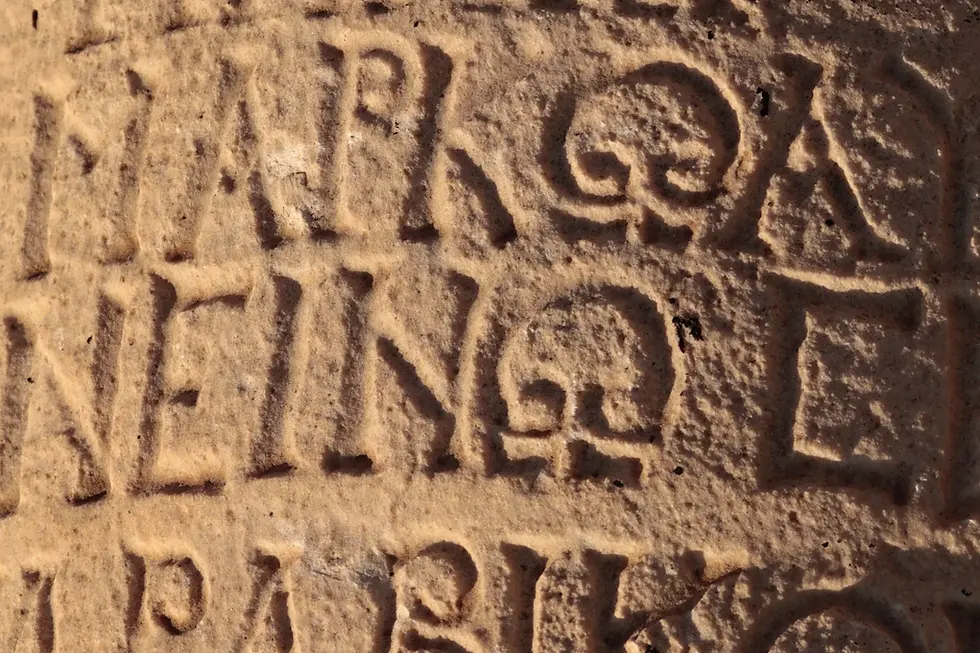Decoding Ancient Languages: The Key to Unlocking History
- Sep 29
- 6 min read

Throughout history, human beings have utilized language as a tool for communication, expression, and documentation. Yet, some of these ancient languages remain mysteries, tantalizing historians, linguists, and archaeologists alike. Decoding ancient languages isn't just about understanding words; it's about unlocking the very essence of past civilizations, their cultures, beliefs, and practices. In this blog post, we'll explore the significance of these languages, the methods used to decode them, and the insights they provide into our human narrative.
Why Decoding Ancient Languages Matters
The study of ancient languages helps us connect with our collective past. Here are several compelling reasons why these ancient tongues are crucial:
Understanding Cultural Heritage: Ancient languages are repositories of culture, tradition, and belief systems. By deciphering these languages, we gain insights into how historic communities lived, thought, and interacted.
Unraveling Historical Events: Many ancient texts contain records of significant events, wars, and treaties. Deciphering these texts helps in reconstructing historical timelines and understanding the socio-political context of those periods.
Advancing Linguistic Studies: The study of ancient languages aids in the evolution of modern linguistics, contributing to theories regarding language formation, syntax, and grammar.
Bridging the Gap to the Present: Modern societies are often built on the foundations laid by ancient civilizations. Understanding their languages helps us connect historical narratives to contemporary culture.
Some Notable Ancient Languages
As we venture into the realm of ancient languages, several standout examples illustrate the diversity of human communication:
1. Sumerian
Sumerian is one of the earliest known written languages, dating back to around 3100 BCE in ancient Mesopotamia. This cuneiform script is significant not only because of its historical role but also because it represents one of the first systems of writing. Sumerian texts reveal insights into early urban life, governance, and religious beliefs.
2. Egyptian Hieroglyphs
The ancient Egyptians used a complex system of symbols called hieroglyphs. These symbols conveyed sounds as well as meanings, providing a rich visual language that has captured the fascination of scholars and history enthusiasts alike. The Rosetta Stone was pivotal in deciphering hieroglyphs, unlocking much of ancient Egyptian history.
3. Latin
Latin, though no longer spoken as a native language, has had a lasting influence on many modern languages, especially in the realms of law, science, and literature. The documents from the Roman Empire have significantly shaped Western literature and philosophical thought.
4. Mayan Glyphs
The ancient Maya civilization developed a sophisticated writing system comprising hieroglyphs. By deciphering these glyphs, researchers have gained insights into Mayan society, astrology, and their complex calendar systems.
How Ancient Languages are Decoded
Decoding ancient languages can be a daunting task, but scholars have developed methods to tackle the intricacies involved. Below are some of the most commonly employed techniques:
1. Comparative Linguistics
Comparative linguistics involves analyzing the similarities and differences among languages. By comparing an ancient language with related languages, linguists can identify cognates (words with a common origin) that may provide clues to meanings.
2. Contextual Analysis
Understanding the context in which ancient texts were created is vital. This might involve analyzing cultural artifacts, historical records, and archaeological sites to gather background information that can inform the translation process.
3. Multilingual Texts
Some ancient languages, like Sumerian or Egyptian, often exist alongside other languages in inscriptions or documents. Multilingual texts serve as valuable resources for translators, allowing them to draw parallels and make educated guesses about meanings.
4. The Use of Technology
In the modern age, technology plays a significant role in decoding ancient scripts. Machine learning, algorithms, and digital databases make it easier to analyze vast amounts of text and detect patterns that human analysis alone may overlook.
The Role of Archaeology in Language Decoding
Archaeology and linguistics are deeply intertwined in the quest to decode ancient languages. Each archaeological discovery provides context and additional data, allowing for more accurate translations. Here are some ways archaeology enhances our understanding:
Contextual Evidence: The location and condition of artifacts contribute essential context that aids deciphering. For example, a text found in a temple may be religious in nature, whereas one unearthed in a marketplace may relate to commerce.
Artifact Preservation: Archaeological sites can preserve inscriptions on stone tablets, pottery, and tools, giving linguists tangible mediums to analyze and decipher.
Collaboration Between Disciplines: The intersection of archaeological science, linguistics, and history leads to richer interpretations and better understanding of texts, as experts from different fields share insights and methodologies.
Challenges in Decoding Ancient Languages
While decoding ancient languages holds immense potential, several challenges can impede progress:
1. Limited Resources
Many ancient languages have sparse documentation, leading to gaps in understanding. Without a significant corpus of texts, drawing conclusions becomes increasingly difficult.
2. Evolving Meanings
Words and symbols can change meaning over time. What once held a specific meaning in an ancient context may not translate directly into modern definitions, complicating the interpretation process.
3. Ambiguity in Symbols
Many ancient scripts contain symbols that can represent multiple sounds or ideas, posing challenges in determining the intended message. Linguists must work carefully to avoid misinterpretation.
Famous Discoveries: Unlocking History
Throughout history, the successful decoding of ancient languages has led to groundbreaking discoveries:
1. The Rosetta Stone
Discovered in 1799, the Rosetta Stone featured the same decree inscribed in three languages: Greek, Demotic, and hieroglyphic. This remarkable artifact was crucial in finally translating Egyptian hieroglyphs, unveiling aspects of a civilization long thought lost to history.
2. The Behistun Inscription
Carved on a cliff in Iran, the Behistun Inscription features cuneiform writing in multiple ancient languages. Its translation helped decipher the Old Persian script and vastly improved the understanding of Achaemenid Empire history.
3. The Dead Sea Scrolls
Discovered in the 1940s, these ancient Jewish texts contain writings that contribute significantly to our understanding of Second Temple Judaism and the early roots of Christianity, though they present a complex mixture of languages, requiring careful scholarly analysis.
A Journey through Written Time
Decoding ancient languages isn’t merely an academic endeavor; it’s a journey that traverses time and connects us with those who lived long ago. Each inscription, each symbol speaks of human experience, struggle, aspiration, and creativity. As we uncover these languages, we're able to tell the stories that have shaped civilizations, opening doors to knowledge that influence our understanding of the world today.
Becoming an Ancient Language Enthusiast
Are you intrigued by the allure of ancient languages? Here’s how you can immerse yourself further:
Read Books and Articles: Numerous publications delve into the intricacies of ancient languages. Begin with accessible language studies before progressing to in-depth scholarly works.
Attend Lectures and Workshops: Local universities often offer public lectures or workshops on historical linguistics. Engage with experts and fellow language enthusiasts to share insights and learn.
Visit Museums: Many museums feature exhibits on ancient cultures and their languages. Observing artifacts can deepen your appreciation and understanding of their contexts.
Join Online Communities: Social media and forums house vibrant communities of language enthusiasts. Participate in discussions and exchanges to enhance your knowledge and passion.
Empower Your Curiosity
Decoding ancient languages is about more than understanding what was written—it’s about empowering our curiosity and nurturing a connection with our collective past. Each discovery reaffirms the importance of language as a cultural cornerstone, and each decipherment carries the potential to rewrite history. So, the next time you come across an ancient script, remember that you’re not just reading; you're part of an ongoing journey through time, uncovering the stories that inform our present and inspire our future.
FAQs
What is the significance of decoding ancient languages?
Decoding ancient languages helps us connect with our cultural heritage, understand historical events, advance linguistic studies, and bridge connections to modern societies.
What are some notable ancient languages discussed in the blog?
Some notable ancient languages include Sumerian, Egyptian Hieroglyphs, Latin, and Mayan Glyphs.
How do scholars decode ancient languages?
Scholars use methods such as comparative linguistics, contextual analysis, studying multilingual texts, and utilizing technology to decode ancient languages.
What challenges do linguists face when decoding ancient languages?
Challenges include limited resources, evolving meanings of words, and ambiguity in symbols which can lead to misinterpretation.
How can one become more involved in the study of ancient languages?
You can get involved by reading books and articles, attending lectures and workshops, visiting museums, and joining online communities focused on ancient languages.




Comments